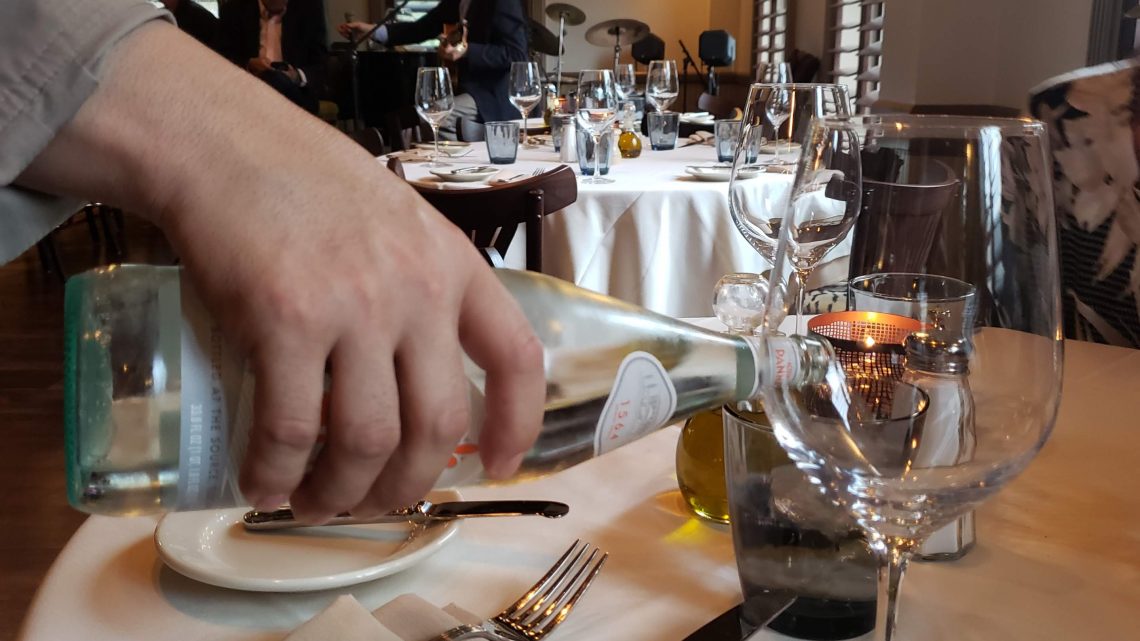Restaurant service runs from “You want fries with that?” to the proper placement of forks and knives for each course. Each type of restaurant brings its own expectations, but service can be excellent anywhere.
No matter the type of restaurant, service can be attentive or indifferent, sparkling or lackluster, knowledgeable or uninformed. It’s hard to define, but I know good service when I get it.
I’ve been to a few restaurants recently that have what I find to be exceptional service.
This is subjective – the definition varies from person to person and place to place. Here are a few of the things that add up to good service for me.
Before the server even speaks, I’m checking out their appearance. I like to see a standard uniform. There are a few places where it’s appropriate for the server to wear their own clothes, but very few.
I want a uniform that is clean and neat. Logo shirts and/or aprons indicate that the restaurant takes special care. Creative, coordinated colors are the Cadillac of dining room staff appearance. At the Lion Brasserie in Greenwich, the servers wore nicely-pressed tan logo shirts and dark brown long aprons. The managers wore suits. That’s right for a clubby Greenwich establishment.
Casual dockside restaurants, on the other hand, often have T-shirts with the restaurant’s name emblazoned across the back – perfect for that setting.
The server should be present and engaged. I don’t need to know their dog’s name, where they’re from, or what they do for fun, but I want them to seem glad to see me, eager to ensure a good experience, and proud of their workplace. A little personal interaction goes a long way.
A team approach involving bussers, servers, food runners and managers is a sign of a well-organized, thoroughly-trained staff. It works like a charm at Via Sforza in Westport.
I want menu knowledge beyond a pat answer to “What’s good?” Can you describe this unfamiliar ingredient? Is there too much garlic for me? Do you bake the bread here? These are all legitimate questions in my mind. At the Tavern at GrayBarns in Norwalk they’re very good at this. The staff is ready for any menu, wine or cocktail question.
I’m glad when a server can give menu advice based on personal tasting as well as the experiences of other customers. Smart servers reinforce choices with comments like “that’s a favorite” or “it’s very popular.” Yes, I know I’m being stroked, but it feels good.
Getting the order right is a must. No mistakes or misunderstandings about doneness, sides, or special requests. If it’s a complicated situation, the server should offer advice. “Would you like the salad first and then the soup as a main course?” Above a certain price point, the “Who gets the hamburger ” question should never be asked.
Servers need to assess and make judgements about their customers. Do I always order a martini and get impatient if the order isn’t taken right away; or do I want time to study the list of fancy cocktails and then ask a few questions. It’s easy to get off on the wrong foot.
The examples I’ve used are from well-established high-end restaurants. Higher menu prices support more staff and better training resources. Those well-paying jobs attract more professional staff. But expectations are higher too. It’s not easy to hit the mark when the hamburger is close to $30 and the steak is double that.
Even in more everyday places where the service may not be so nuanced, it’s still easy to spot the real thing: genuine, knowledgeable and caring.
I’m not hard to please – at least I hope not. Some of the things I look for are management’s responsibility; others are influenced by the server’s attitude. Anyone can have a bad day. None of these things are deal breakers, but put them all together and they might be. Get them all right? I’ll leave a good tip, recommend the restaurant, and come again.
Frank Whitman can be reached at NotBreadAloneFW@gmail.com.









No Comment